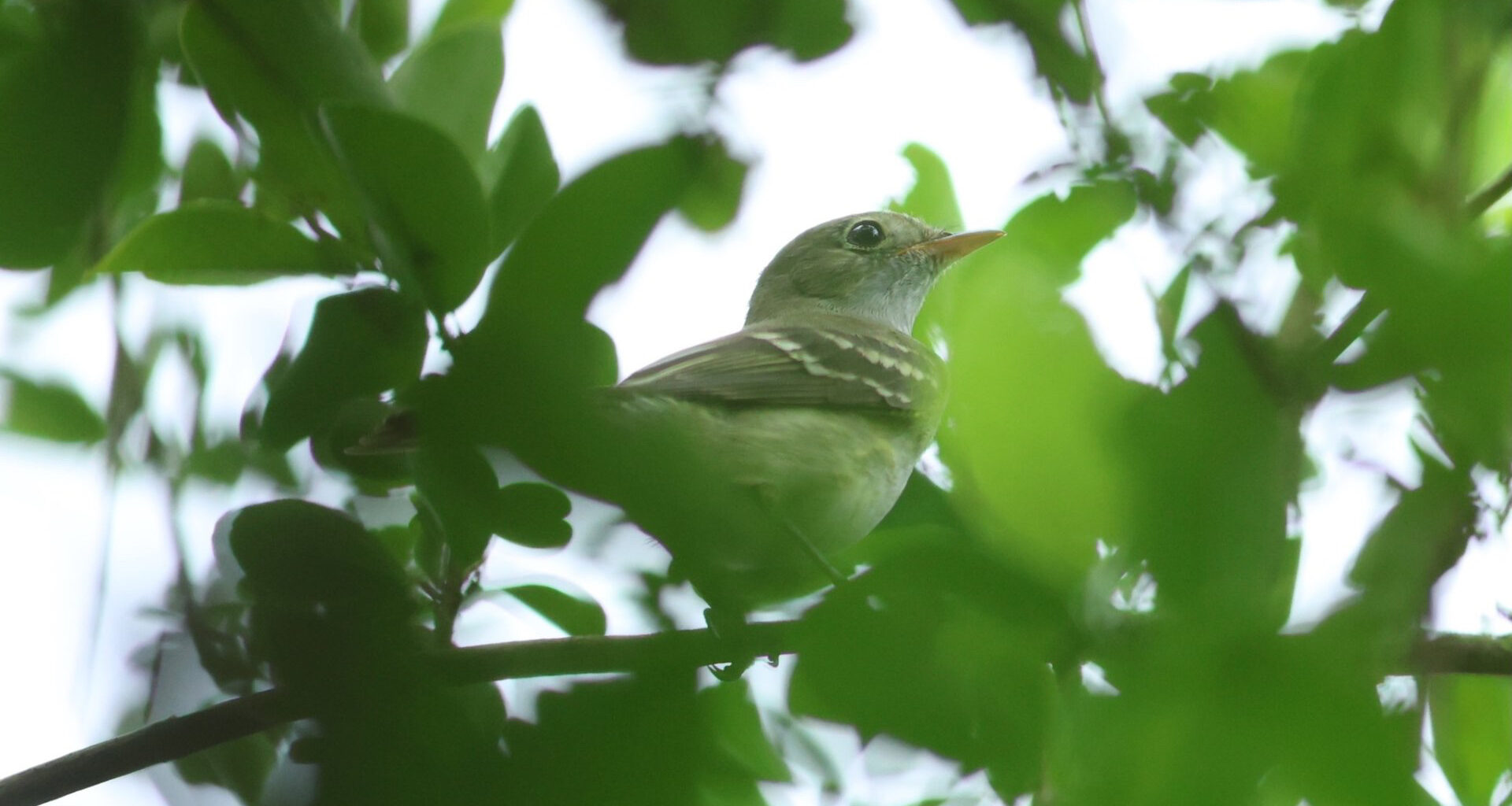Ornithologists flocked to FGCU on Sept 2 when a small-billed elaenia, a bird rarely seen in North America, was spotted in the Food Forest.
Anthony Dues, an FGCU student and the vice president of the FGCU Ornithology Club, spoke on behalf of Oscar Johnson, an ornithology professor on campus.
“Someone who is a friend of Dr. Johnson’s found a different rare bird from the west coast called the rufous hummingbird,” Anthony Dues, FGCU student, said. “The second he [ Johnson] gets there, maybe two or three feet into that, he spots the elaenia.”
The sighting of this unique beauty in North America is so unlikely that Johnson dropped everything to see the small-billed elaenia.
Story continues below advertisement
“In the report he put out, his hands were shaking because he knew it was already a super rare bird,” Dues said.
Dues was leaving the gym when he received a message from a friend, telling him to meet them at the food forest.
“I got in my car, sped up 75, I pulled up, and I was like, this is serious,” Johnson said.“In that moment, it’s like an adrenaline rush, but at the same time, you’re trying to capture a photograph so people don’t think you’re crazy when you tell them, ‘I saw a small-billed elaenia.’”
How could the flycatcher have ended up all the way here in Southwest Florida? It may have something to do with the migration patterns that are genetically ingrained in them.
“What can happen sometimes is that they can have a genetic mutation that either flips the direction of their migratory patterns, either 90 or 180 degrees,” said Dues. “ If you scroll on a map, you can see that Florida is about 180 degrees North of Peru.”
Although this is the first sighting of this bird in Florida, it wouldn’t be the first time it has been spotted on the continent. There have been around six sightings in total, in places such as Chicago and Quebec.
“It’s exciting! ‘Seeing something super rare that you don’t expect to see in the place where you are. In South America, they are solitary.” Annie said.
This discovery shows that North America is not necessarily safe for these types of songbirds. According to Dues and Johnson, extreme temperatures can pose a serious threat to this specific species of elaenia.
“In the non-breeding season, which is their winter and our summer, they are up in Peru and Colombia. In the breeding season, they go South of that, in Argentina, Paraguay, and Uruguay. It’s not uncommon for these types of birds to have those genetic mutations and lose their path,” Dues said.
This was a huge moment for birdwatchers and ornithologists alike, regardless of distance. Birders far and wide, across the state, out of state, and even out of the country saw this as a once-in-a-lifetime opportunity.
“We had people from Orlando…We had someone from Panama City who got in his car Sunday night, drove overnight to get down here to see this bird. Another guy from Costa Rica booked a flight to come down here. People were driving hours just to see the elaenia,” said Dues. “For a lot of people, this is their only chance. For me, I can’t just book a flight to Peru. This was my chance to see a bird that I will probably never get to see any other time.”
Mercedes Roesler, the president of the FGCU Ornithology Club, was ecstatic to hear the news of the elaenia on campus, especially after it was spotted in the food forest.
“As a club, we’ve been going for years. We know as a club that it’s a really great place, but the general community doesn’t.” Roesler said.
Now that the elaenia has been spotted, the food forest has been gaining popularity and attention from students and birders across southwest Florida.
“It’s exciting for us as a club because it’s obviously getting us a lot of traction, and it’s helping us with some of our other efforts around campus,” Roesler said.
Roesler is thrilled to see and learn more about the elaenia and how its appearance will affect the attraction of the food forest and the FGCU Ornithology Club for students.

